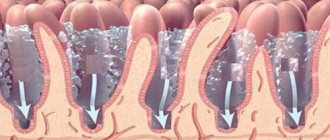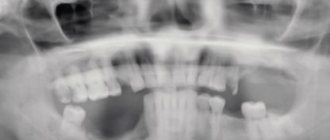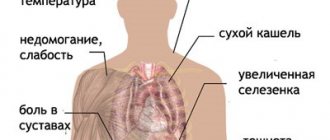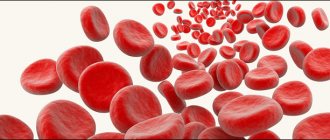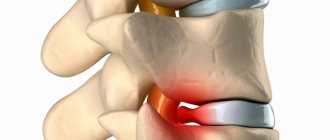Hemophilia - what is it, symptoms and treatment of hemophilia
Hemophilia is a hereditary disease caused by a deficiency of blood plasma clotting factors and characterized by an increased tendency to hemorrhage. The prevalence of hemophilia A and B is 1 case per 10,000-50,000 males.
Most often, the onset of the disease occurs in early childhood, so hemophilia in a child is an urgent problem in pediatrics and pediatric hematology. In addition to hemophilia, other hereditary hemorrhagic diathesis also occurs in children: hemorrhagic telangiectasia, thrombocytopathy, Glanzmann's disease, etc.
What it is?
Hemophilia is a hereditary blood disorder that is caused by a congenital absence or reduction of blood clotting factors. The disease is characterized by a blood clotting disorder and manifests itself in frequent hemorrhages in the joints, muscles and internal organs.
This disease occurs with a frequency of 1 case per 50,000 newborns, with hemophilia A diagnosed more often: 1 case of the disease per 10,000 people, and hemophilia B less often: 1: 30,000-50,000 male residents. Hemophilia is inherited through a recessive trait associated with the X chromosome.
In 70% of cases, hemophilia is characterized by a severe course, steadily progresses and leads to early disability of the patient. The most famous hemophiliac in Russia is Tsarevich Alexei, the son of Alexandra Feodorovna and Tsar Nicholas II. As you know, the disease was inherited by the family of the Russian emperor from his wife’s grandmother, Queen Victoria. Using the example of this family, the transmission of the disease along the genealogical line is often studied.
Myths and facts
The patient can die from a small scratch . This is not so, the danger comes from major injuries and surgical operations, tooth extraction, spontaneous internal hemorrhages in muscles and joints.
Only men are affected by hemophilia . This is not entirely true. Women also suffer from hemophilia, but extremely rarely. About 60 cases of hemophilia in girls have been described worldwide. According to one version, the rarity of this disease among women is due to the physiology of the female body: monthly blood loss due to poor blood clotting leads to early death.
Patients with hemophilia cannot undergo surgery . That’s right, any surgical interventions are permitted only for health reasons and if it is possible to organize replacement therapy with blood clotting factor drugs. In addition, patients with hemophilia cannot engage in physical activity and sports, and it is also dangerous for them to administer drugs intramuscularly.
A woman with hemophilia genes will definitely give birth to a sick child . In fact, this is not entirely true, because carriers of the hemophilia gene cannot plan the birth of a sick or healthy child. The only exception can be the procedure of in vitro fertilization (IVF), but subject to a number of conditions. Diagnose the presence of hemophilia in the fetus from the 8th week of pregnancy.
Causes
The causes of hemophilia have been sufficiently studied. Characteristic changes in one gene were discovered on the X chromosome. It has been established that this particular region is responsible for the production of the necessary coagulation factors and specific protein compounds.
The hemophilia gene does not originate on the Y chromosome. This means that the fetus gets it from the mother’s body. An important feature is the possibility of clinical manifestations only in males. The hereditary mechanism of transmission of the disease is called “sex-linked” in the family. Color blindness (loss of the function of distinguishing colors) and the absence of sweat glands are transmitted in a similar way. Scientists tried to answer the question of in which generation the gene mutation occurred by examining the mothers of boys with hemophilia.
It turned out that from 15 to 25% of mothers did not have the necessary damage to the X chromosome. This indicates the occurrence of a primary mutation (sporadic cases) during the formation of the embryo and means the possibility of hemophilia without complicated heredity. In subsequent generations, the disease will be passed on as a family trait.
No specific reason for the change in the child’s genotype has been identified.
Forecast
Today, hemophilia throughout the world is not a death sentence, since with early diagnosis and correct replacement treatment, patients live full lives. They can get an education and work, play certain sports, start a family and travel.
Prevention with replacement therapy is an effective way to prevent complications of hemophilia that lead to disability. The main task is to unite doctors and the state in the production of coagulation factors in sufficient quantities to meet the needs of all patients. If at the beginning of the twentieth century. The life expectancy for hemophilia was no more than 13 years, but today, subject to preventive treatment, the life expectancy of patients does not differ from healthy people. At the same time, patients with the inhibitory form are at risk of disability and even death. The greatest risk of developing the inhibitory form in children is observed up to 10 years of age and subsequently decreases.
Classification
Hemophilia occurs due to a change in one gene on chromosome X. There are three types of hemophilia (A, B, C).
| Hemophilia A | a recessive mutation in the X chromosome causes a deficiency in the blood of an essential protein - the so-called factor VIII (antihemophilic globulin). This hemophilia is considered classic, it occurs most often, in 80-85% |
| Hemophilia B | recessive mutation on the X chromosome—plasma factor IX (Christmas) deficiency. The formation of a secondary coagulation plug is disrupted. |
| Hemophilia C | autosomal recessive or dominant (with incomplete penetrance) type of inheritance, that is, occurs in both men and women) - blood factor XI deficiency is known mainly among Ashkenazi Jews. Currently, hemophilia C is excluded from the classification, since its clinical manifestations differ significantly from A and B. |
Hemophilia comes in three forms, depending on the severity of the disease:
| Lightweight | bleeding appears only after medical intervention associated with surgery or as a result of injuries. |
| Moderate | Clinical symptoms characteristic of hemophilia may appear at an early age. This form is characterized by the occurrence of bleeding as a result of injuries, the appearance of extensive hematomas. |
| Heavy | signs of the disease appear in the first months of a child’s life during the growth of teeth, during the child’s active movement when crawling and walking. |
Parents should be alerted to frequent respiratory tract bleeding in a child. The occurrence of large hematomas due to a fall and minor injuries are also alarming symptoms. Such hematomas usually increase in size, swell, and when touching such a bruise, the child experiences pain. It takes a long time for hematomas to disappear—on average, up to two months.
Hemophilia in children under 3 years of age can manifest itself in the form of hemarthrosis. Most often, large joints are affected - hip, knee, elbow, ankle, shoulder, wrist. Intra-articular bleeding is accompanied by severe pain, impaired motor function of the joints, their swelling, and an increase in the child’s body temperature. All these signs of hemophilia should attract the attention of parents.
How is hemophilia treated?
It is impossible to get rid of the disease, but to avoid complications, doctors prescribe supportive treatment. It should improve blood clotting. For this they use Hemophilia / Mayo Clinic:
- Clotting factors. Proteins obtained from donated blood or synthesized in the laboratory, which are administered according to a schedule to a patient with hemophilia.
- The hormone desmopressin. In mild forms of the disease, it stimulates the synthesis of its own coagulation proteins.
- Fibrin sealants. They are applied to wounds and cuts to stop bleeding.
- Clotting drugs. They help prevent blood clots from breaking down.
If your joints are damaged, your doctor will prescribe physical therapy. And if there was severe internal bleeding, surgery may be required.
All people with hemophilia are also recommended to be vaccinated against hepatitis A and B to reduce the possibility of infection through blood transfusions.
Hemophilia in women
Hemophilia in women is practically casuistry, since for this to happen there must be an incredible combination of circumstances. Currently, only 60 cases of hemophilia in women have been recorded in the world throughout history.
So, a woman can have hemophilia only if her father, who has hemophilia, and her mother, a carrier of the disease gene, marry. The likelihood of having a daughter with hemophilia from such a union is extremely low, but still exists. Therefore, if the fetus survives, a girl with hemophilia will be born.
The second option for the appearance of hemophilia in a woman is a gene mutation that occurred after her birth, which resulted in a deficiency of coagulation factors in the blood. This is exactly the mutation that occurred in Queen Victoria, who developed hemophilia not inherited from her parents, but de novo.
Women with hemophilia have the same symptoms as men, so the course of the disease is exactly the same between genders.
What is hemophilia? (symptoms, diagnosis, treatment)
Its earliest mentions are found in the Talmud. In the 12th century, the first description of the manifestations of the disease in several families appeared, made by Abu al Qasim, a doctor who served at the court of one of the Arab rulers of Spain.
Some of Queen Victoria's descendants suffered from this disease, including her great-grandson Alexei Romanov, son of Nicholas II.
“The disease of kings” is how history has dubbed this disease. Today we know it as hemophilia. Associate Professor of the Department of Hematology and Cell Technologies, Senior Researcher, Head of the Hemostasis Study Group of the Department for Optimizing the Treatment of Hematological Diseases of the Federal State Budgetary Institution National Medical Research Center DGOI named after. Dmitry Rogachev, Doctor of Medical Sciences Zharkov Pavel Aleksandrovich.
— Pavel Alexandrovich, what kind of disease is hemophilia and what symptoms does this disease manifest?
Hemophilia is, in most cases, a hereditary human disease that manifests itself in a violation of the ability of blood to clot.
Hemophilia is associated with a deficiency of one of the proteins of the blood coagulation system (clotting factor). Due to the lack of this factor, it is more difficult for the human body to form a full-fledged blood clot and stop bleeding. This is why people with hemophilia may experience longer bleeding with minimal trauma - for example, drawing blood, a cut, abrasion, or tooth extraction.
Blood vessels are found in almost all human organs and tissues. When a vessel is injured or ruptured, blood leaks out, and to stop it requires the activation of a complex blood coagulation system. As a result, a blood clot is formed, which, like a plug, closes the damage.
If in a healthy child without hemophilia, when injured, a small “bruise” forms and the coagulation system responds quickly, then in a child with hemophilia, such an injury, even minor, can lead to the formation of a larger “bruise” and even a hematoma, in which blood accumulates in the tissue . Such bleeding and hemorrhage can occur almost anywhere in the human body, the most dangerous of which are bleeding into internal organs or the brain. Patients with hemophilia are also characterized by bleeding into the joint cavity, leading to hemarthrosis and subsequent dysfunction of the joints, as well as hemorrhage into the muscles, which can lead to their subsequent shortening, reduction and dysfunction.
— Where is the hemophilia gene located in a person?
The hemophilia gene, regardless of the form of the disease (A or B), is located on the X chromosome, which is present in one copy in men and in two in women.
— Today, how many patients with hemophilia are there in Russia and the world?
There are more than 400,000 patients with hemophilia in the world, and their number is gradually increasing. In Russia, according to the Ministry of Health, as of February 2021, more than 8,000 hemophilia patients were registered.
— Why do only men suffer from hemophilia?
This is not entirely true - in very rare cases, women can also suffer from hemophilia. This applies to those cases when a woman has an inhibitor to VIII (hemophilia A) or IX (hemophilia B) coagulation factors. In addition, there are various genetic disorders when one of the X chromosomes “turns off” or becomes inactive. In this case, the woman must be a carrier of a mutation in the gene for coagulation factor VIII or IX. However, this happens extremely rarely.
— Will a carrier of the hemophilia gene necessarily give birth to a sick child?
Completely optional. Genetics is a delicate thing, but to explain it quite simply, a carrier woman has a chance of giving birth to a sick boy from a healthy father in 50% of cases, and in 50% of cases, a carrier girl from a healthy father.
— How is hemophilia diagnosed?
The most important and probably the main direction for diagnosing hemophilia today is a coagulological examination or, more simply, a study of how blood clots. At the first stage, a general study (screening coagulogram) is carried out and, thus, it is determined whether there is a violation of the function of coagulation proteins. After this, depending on the detected disorder (in the case of hemophilia, the activated partial thromboplastin time will be prolonged), blood coagulation factors are determined.
Recently, genetic diagnostics has been actively developing - this is important because... There is already information that some mutations carry the risk of the appearance of an inhibitor - an antibody, or, more simply, an “allergie” to one’s own and the introduced coagulation factor. As a result of this “allergy,” factor concentrate therapy becomes ineffective and bleeding becomes much more difficult to control.
— Can hemophilia occur spontaneously, or is it clear that the child is sick from the moment the baby is born?
It all depends on the severity of the disease. If the disease is severe and the activity of the coagulation factor is extremely low, then the first signs of hemophilia may be visible immediately after birth. However, in some cases (especially with moderate or mild cases), hemophilia is detected much later, and even in adolescence. There is also acquired hemophilia, which I briefly talked about earlier.
— Pavel Alexandrovich, please tell us about the main problems of patients with hemophilia.
As with any chronic disease, there are problems. Of course, there are much fewer of them than there were, say, 15-20 years ago. The situation with hemophilia patients in Russia has changed radically with the introduction of factor concentrate therapy. Since that time, it first became possible to quickly and effectively stop bleeding, and then to prevent bleeding. The All-Russian Society of Patients with Hemophilia played a huge role in this. With their assistance, hemophilia was included in the list of “7 nosologies” and patients began to be provided with factor concentrate in sufficient quantities, including for prevention.
Go to the website of the All-Russian Hemophilia Society
However, after the provision of medicines, the patients' problems did not end.
Firstly, every patient with hemophilia, especially severe hemophilia, remains at risk of developing an inhibitor. In this case, it becomes more difficult to control bleeding.
Secondly, a number of medical problems remain - first of all, the quality of preventive medical examinations. And children with hemophilia should be the healthiest. This is necessary in order to create a minimum of conditions for possible bleeding. Oral care, gastrointestinal health, musculoskeletal system. The list goes on for a long time.
Thirdly, a number of social problems remain. Children with hemophilia often experience difficulties when entering kindergarten, attending school, or attending sports clubs. And fourthly, of course, a lot depends on the family and environment, because “disease” is largely in our heads. If parents see their child as deeply disabled, then he will grow up with the corresponding psychology.
— Has modern medicine learned to successfully treat hemophilia?
I learned. And treat and, apparently, even cure. Regarding the last point, there is already data on the successful use of genetic therapy, i.e. curing hemophilia B and even A. These drugs are still being tested and are not registered for routine use in patients. Perhaps, at the first stage, 2-4 injections per year will partially or completely restore the factor deficiency. However, this therapy is not suitable for everyone, unfortunately. Wait and see.
— What could you say about the prognosis of life with hemophilia?
Favorable. Patients with hemophilia in developed countries live as long as patients without it.
— Where in our country can patients with hemophilia receive quality treatment?
The question is not entirely ethical. It would be a shame if, while listing, I forget to mention someone.
— What rules should patients with hemophilia follow in order to improve their quality of life?
I will not go deeply into the medical side of the issue - patients with hemophilia are provided with medications. I repeat: such a patient must be an almost absolutely healthy person, both physically and mentally. You need to undergo regular medical examinations, engage in physical education (specifically culture, not sports), and move more. Preventive treatment allows this to be done successfully. You need to be able to listen and hear, be active and not look for the guilty. Now there are all the means to ensure that a patient with hemophilia lives with dignity and his quality of life corresponds to that of a healthy person. Schools, patient meetings, discussions, and joint events are held. People with hemophilia share their experiences, get to know each other, and help each other. The main thing is not to be left alone with the disease.
For reference:
Zharkov Pavel Alexandrovich
Graduate of the Pediatric Faculty of the Russian State Medical University (Moscow) in 2007.
In 2007 - 2009, he completed a residency in the specialty “Pediatrics” at the Research Institute of Pediatric Hematology, Oncology and Immunology (Moscow).
In 2013, he completed his postgraduate studies in Pediatrics/Hematology. He defended his thesis and was awarded the scientific degree of Candidate of Medical Sciences.
In 2021, he graduated from doctoral studies in the specialty “Hematology/Pediatrics” 2021.
Currently he holds the position of a hematologist at the advisory department of the Federal State Budgetary Institution National Medical Research Center for Children's and Pediatric Orthopedics named after. Dmitry Rogachev.
He is a senior researcher, head of the hemostasis study group of the department for optimizing the treatment of hematological diseases of the Federal State Budgetary Institution NMRC DGOI named after. Dmitry Rogachev.
Associate Professor, Department of Hematology and Cell Technologies, Federal State Budgetary Institution NMRC DGOI named after. Dmitry Rogachev.
Signs of hemophilia
Clinical hemophilia is the formation of hemorrhages in various organs and tissues. The type of bleeding is hematoma, which means that the hemorrhages are large, painful and delayed.
Hemorrhage can form 1-4 hours after traumatic exposure. The blood vessels (spasm) and platelets (blood clotting cells) react first. Both blood vessels and blood cells do not suffer in hemophilia, their function is not impaired, so initially the bleeding stops. But then, when the turn comes for the formation of a dense blood clot and the final stop of bleeding, the defective plasma link of the blood coagulation system enters the process (plasma contains defective coagulation factors) and bleeding resumes.
This is how all the following pathological conditions inherent in hemophilia are formed.
Why is hemophilia dangerous?
It can lead to life-threatening complications. Typically this is Hemophilia/Mayo Clinic:
- Brain hemorrhage. Severe headache, vomiting, drowsiness or lethargy, and convulsions appear; seeing double. Sometimes a person loses consciousness.
- Bleeding in deep muscles. Blood collects between layers of muscle and puts pressure on nerves, which can cause limbs to become numb or painful.
- Joint damage. Blood will often accumulate in them, which will lead to the destruction of cartilage and the development of arthritis. In some cases, a Hemophilia A/Medscape cyst may appear. Gradually, irreversible deformation occurs and the joint ceases to be mobile.
Also, with hemophilia, blood transfusions are sometimes necessary. This increases the risk of contracting HIV and other viral infections.
Hematuria
Hematuria is the discharge of blood in the urine, a serious symptom indicating impaired renal function or damage to the ureter, bladder and urethra (urethra). If there is a tendency to stone formation, then it is necessary to regularly see a urologist in order to prevent the formation of stones and trauma to the mucous membranes.
Hematuria is more often observed in children over 5 years of age. A provoking factor may also be trauma to the lumbar region; bruises that would not cause harm to a healthy child can become fatal.
Symptoms of hemophilia
The first signs of pathology can be detected in newborns. Thus, the likelihood of confirming the diagnosis of hemophilia in a child will be indicated by prolonged bleeding from the umbilical cord and numerous subcutaneous hematomas. Excessive bleeding in infants at the time of teething becomes no less alarming. But during lactation, the child receives a sufficient amount of thrombokinase with mother's milk.
Post-traumatic bleeding is typical for children who have learned to crawl and walk. In addition to nosebleeds, intermuscular hematomas and hemorrhages in the joints (hemarthrosis) are added. Against this background, anemia develops.
As children age, they may experience bleeding from the gastrointestinal tract. This is caused by injury or medical procedures. The greatest danger is bleeding from the nasopharynx and pharynx. Against this background, airway obstruction may develop.
Are you experiencing symptoms of hemophilia?
Only a doctor can accurately diagnose the disease. Don't delay your consultation - call
Hemarthrosis
Hemarthrosis is hemorrhage in the joints, which is more often observed in children with hemophilia from 1 to 8 years old. Large joints are predominantly affected, especially the knees and elbows, less commonly the hip and shoulder.
- Acute hemarthrosis is a newly emerging condition with a turbulent clinical picture.
- Recurrent hemarthrosis is frequent, repeated hemorrhages in the same joint.
The frequency and location of hemorrhages in the joints depends on the severity of hemophilia and the type of physical activity:
- When running and jumping quickly, symmetrical hematomas can form in the knee joints.
- If you fall on any side, hemarthrosis occurs on the corresponding side.
- When loading the upper limbs (pull-ups, hanging, push-ups and other types of activity associated with the work of the arms and shoulders), hemorrhages in the elbow and shoulder joints and small joints of the hands are common. The affected joint increases in volume, there is swelling, pain when palpating and moving.
Hemarthrosis without treatment, especially recurrent ones, can be complicated by suppuration of the contents of the joint capsule, as well as organization (degeneration into scar tissue) and the formation of ankylosis (stiff, immobile joint).
Specialists
| 4.8 9 reviews | Belkina Tatyana Vilenovna Therapist 23 years of experience Doctor of the highest category Admission from 2100 rub. |
Moscow Clinic st. Polkovaya, 12, bldg. 1
Armedika on Leninsky Leninsky Prospekt, 123
| 4.8 38 reviews | Dvoretsky Leonid Ivanovich Therapist Experience 46 years Doctor of the highest category Admission from 3500 rub. |
| 4.5 9 reviews | Lobanova Tatyana Igorevna Therapist 7 years experience Admission from 2500 rub. |
Gastrointestinal bleeding
In the case of severe hemoglobin and severe deficiency of coagulation factors (more often with a combined deficiency of factors VIII and IX), traces of blood can be noticed already during the first regurgitation after feeding the baby. Excessively hard food and children swallowing small objects (especially those with sharp edges or protrusions) can injure the mucous membrane of the gastrointestinal tract.
As a rule, if fresh blood is detected in the vomit or during regurgitation, then damage should be looked for on the mucous membrane of the esophagus. If the vomit looks like “coffee grounds,” then the source of the bleeding is in the stomach; the blood has had time to react with hydrochloric acid, and hydrochloric acid hematin has formed, which has a characteristic appearance.
If the source of the bleeding is in the stomach, there may also be the presence of black, often liquid, tarry stools called melena. If there is fresh blood in the child's stool, bleeding from the lowest parts of the intestine - the rectum and sigmoid colon - can be suspected.
Pathogenesis
The pathogenesis of hemophilia is based on a deficiency of plasma factors (VIII, IX, XI) of blood coagulation, which causes a disruption of the process of blood coagulation in the internal coagulation unit of hemostasis (formation of thromboplastin) and causes hematoma delayed type of bleeding. The first stage of blood coagulation is the process of thromboplastin formation, which occurs normally only if there is a sufficient concentration of factors VIII and IX. Its duration is 12-15 minutes, and the subsequent process of blood clotting after the appearance of active thromboplastin in the blood occurs almost instantly.
It is the disruption of this plasma phase of hemostasis that causes the type of bleeding characteristic of hemophilia. Bleeding immediately after injury may be absent, since primary (vascular-platelet) hemostasis functions normally, which ensures the formation of a primary thrombus.
Since the primary thrombus is not able to provide a final stop of bleeding, secondary hemostasis suffers - the formation of a fibrin (final) thrombus, the bleeding resumes and occurs suddenly a few hours (the next day) after surgery/trauma. At the same time, despite its duration, there is no increase in the volume of blood loss, which is its feature. The figure below schematically shows the pathogenesis of hemophilia.
Combined clinical syndromes
The genes encoding the development of color blindness and hemophilia are located at a very close distance on the X chromosome, so cases of their joint inheritance are not uncommon. At the birth of a daughter, the disease does not develop into a clinical form, but in 50% of cases the daughter becomes a carrier of the pathological gene.
A boy born in the marriage of a colorblind man and a healthy woman has a 50% chance of being colorblind, but if the mother is a carrier of a defective gene and the father is sick (colorblindness or colorblindness along with hemophilia), then the birth of a sick boy is 75%.
Where does hemophilia come from?
It is usually inherited by Hemophilia / Mayo Clinic through the sex chromosomes, which are XX in women and XY in men. The boy receives Y from his father, and X from his mother. The girl receives two X chromosomes from both parents. The defective hemophilia gene is located on one X chromosome, but is suppressed by the second. Therefore, the disease does not manifest itself in women, but the mother can pass it on to her son.
In about 30% of people, hemophilia is the result of a spontaneous mutation of Hemophilia/Mayo Clinic genes rather than heredity. Even less common is the acquired form of the disease, which appears due to immune disorders. They can be provoked by:
- pregnancy;
- autoimmune diseases;
- cancer;
- multiple sclerosis.
Diagnostics
Specialists of various profiles should take part in the diagnosis of the disease: neonatologists in the maternity ward, pediatricians, therapists, hematologists, geneticists. If unclear symptoms or complications appear, consultations with a gastroenterologist, neurologist, orthopedist, surgeon, ENT doctor and other specialists are sought.
Signs identified in a newborn must be confirmed by laboratory methods for studying coagulation.
Changed coagulogram parameters are determined:
- coagulation and recalcification time;
- thrombin time;
- activated partial thromboplastin time (aPTT);
- Specific tests are performed for thrombin potential and prothrombin time.
Diagnostics includes studying:
- thromboelastograms;
- carrying out genetic analysis for the level of D-dimer.
A decrease in the level of indicators to half the norm or more has diagnostic significance.
Hemarthrosis must be examined using radiography. Hematomas with suspected retroperitoneal localization or inside parenchymal organs require ultrasound examination. To identify kidney diseases and damage, a urine test and ultrasound are done.
Tests and diagnostics
The diagnosis of hemophilia is made on the basis of a study of family history, physical examination (the patient has manifestations of cutaneous hemorrhagic syndrome in the form of multiple hematomas/ecchymoses of varying severity), clinical manifestations (joint damage in the form of swelling/deformation, local increase in skin temperature, disorders range of motion/joint mobility, limb muscle wasting, etc.), as well as laboratory coagulological examination data (activated partial thromboplastin time, thrombin time, prothrombin time, blood clotting time, blood fibrinogen concentration according to Clauss, decreased level of factor VIII/IX, etc. ). Molecular genetic research may also be performed.
In order to assess the severity of joint damage and the condition of organs in which profuse bleeding is noted (kidneys, stomach, intestines), an X-ray examination, ultrasound/CT/MRI of joints/soft tissues, chest and abdominal organs, urinary tract, brain, esophagus are performed -gastroduodenoscopy/colonoscopy.
Most often, the diagnosis of hemophilia is made in early childhood, when the child begins to walk and parents note that his blood does not clot.
The average age of diagnosis of hemophilia, the severe form, is 9 months; for moderate forms - 22 months, and mild forms of the disease are diagnosed in children at a later age, mainly after invasive interventions/tooth extraction. A screening test for disorders of the coagulation system is the clotting time, and when this indicator is prolonged, studies of the level of factors in the blood are carried out, on the basis of which the diagnosis of “hemophilia” is established and the severity of the disease is determined.
Treatment of hemophilia
A group of geneticists managed to cure laboratory mice of hemophilia using gene therapy. Scientists used adeno-associated viruses (AAV) for treatment.
The principle of treating hemophilia is to cut out the mutated DNA sequence using an enzyme carried by AAV, and then insert a healthy gene into this place with a second AAV virus. Coagulation factor IX is encoded by the F9 gene. If the F9 sequence is corrected, the clotting factor will begin to be produced in the liver, like in a healthy individual.
After gene therapy in mice, the level of the factor in the blood increased to normal. After 8 months, no side effects were identified.
Treatment is carried out during bleeding:
- hemophilia A - fresh plasma transfusion, anti-hemophilia plasma, cryoprecipitate;
- hemophilia B - fresh frozen donor plasma, coagulation factor concentrate;
- hemophilia C - fresh frozen dry plasma.
Next, symptomatic therapy is carried out.
List of sources
- Protocol for the management of patients with Hemophilia. Problems of standardization in healthcare 2006, p. 18-74.
- Guide to hematology: in 3 volumes. T.3 / Edited by A.I. Vorobyov. 3rd ed. M., 2005.
- Rumyantsev A.G., Rumyantsev S.A., Chernov V.M. Hemophilia in the practice of doctors of various specialties. 2013. 136 p.
- Tretyakova O.S. Hemophilia in children: etiopathogenesis, clinical manifestations, diagnostic approaches //Children's medicine. 2012, 3-4 (16-17) p. 26-35.
- Zozulya N.I., Kumskova M.A., Polyanskaya T.Yu., Svirin P.V. // Clinical guidelines for the diagnosis and treatment of hemophilia. 2021. 34 p.
Prevention
The causes of hemophilia are such that they cannot be avoided by any measures. Therefore, preventive measures consist of a woman visiting a medical genetic center during pregnancy to determine the hemophilia gene on the X chromosome.
If the diagnosis has already been made, then you need to find out what kind of disease it is in order to know how to behave:
- It is imperative to register with a dispensary, adhere to a healthy lifestyle, and avoid physical activity and injuries.
- Swimming and physical therapy can have a positive effect on the body.
People are registered at the dispensary as early as childhood. A child with this diagnosis is exempt from vaccinations and physical education due to the risk of injury. But physical activity should not be absent from the patient’s life. They are necessary for the normal functioning of the body. There are no special nutritional requirements for a child suffering from hemophilia.
For colds, Aspirin should not be given, as it thins the blood and can cause bleeding. You should also not use cups, as they can cause bleeding in the lungs. You can use a decoction of oregano and lagochilus. Relatives of the patient should also know what hemophilia is and undergo training in providing medical care if bleeding occurs. Some patients are prescribed clotting factor concentrate injections every three months.
Classification of the disease
Types of hemophilia are distinguished based on the deficiency of a certain blood clotting factor in the patient's body. Basic information about the types of disease is presented in the table.
| View | Description |
| A | It is diagnosed in 84-86% of people suffering from the pathology in question. Caused by a deficiency of clotting factor VIII (antihemophilic globulin). |
| B | Occupies a share of 12-13% of clinically diagnosed cases of hemophilia. Develops against the background of deficiency of coagulation factor IX (thromboplastin) |
| C | Occurs no more often than 1-2%. Becomes a consequence of insufficient production of blood coagulation factor XI. |
About 0.5% of detected cases of hemophilia of various etiologies belong to other types - V, VII, X and others.
Hemophilia Society
In many countries of the world, in particular in Russia, special societies have been created for patients with hemophilia. These organizations unite patients with hemophilia, members of their families, medical specialists, scientists studying this pathology and simply individuals who want to provide any assistance to patients with hemophilia. There are websites of these communities on the Internet, where anyone can find detailed information about what hemophilia is, read legal materials on this issue, communicate on a forum with people suffering from this pathology, exchange experiences, ask for advice, and, if necessary, get moral support.
In addition, the sites usually contain a list of links to domestic and foreign resources - foundations, organizations, information sites - with similar topics, giving the visitor the opportunity to comprehensively familiarize himself with the problem of hemophilia or get to know people suffering from this pathology living in his region. The creators of such communities organize special conferences, “schools” for patients, and all kinds of social events in which anyone with hemophilia can take part.
Therefore, if you, your relative or friend suffers from hemophilia, we recommend that you become a member of such a society: there you will certainly find support and help in the fight against such a serious disease.
Diagnosis of pathology
Diagnostic procedures are performed by doctors of several specializations: neonatologist, pediatrician, geneticist and hematologist. For concomitant pathologies, consultation with a gastroenterologist, orthopedist, otolaryngologist and neurologist may be required.
At-risk couples should visit a doctor before conceiving a child. Molecular genetic research of biomaterials from future parents will allow us to take into account the risk of having a child with hemophilia. After conception, prenatal screenings may be performed. Their results will confirm or refute the fact that the child inherited hemophilia.
Neonatal tests performed in the first days of a baby’s life are no less effective. A coagulogram provides the neonatologist with comprehensive information about the production of coagulation factors by the newborn’s body.
In case of hemarthrosis, the child is prescribed an X-ray examination of the joints. Ultrasound diagnostics is performed when signs of internal bleeding and retroperitoneal hematomas are detected.
Treatment of the disease
Therapeutic measures during the treatment of hemophilia belong to one of two groups - preventive or symptomatic. In the first case, a patient with a severe form of pathology receives regular doses of blood clotting factor concentrates. Their presence reduces the risk of developing arthropathy and internal bleeding. When planning surgical interventions (including tooth extraction), the patient receives repeated drug transfusions.
Symptomatic procedures are performed for cuts and external bleeding. Doctors recommend using a hemostatic sponge and applying a pressure bandage. Small wounds should be treated with thrombin.

